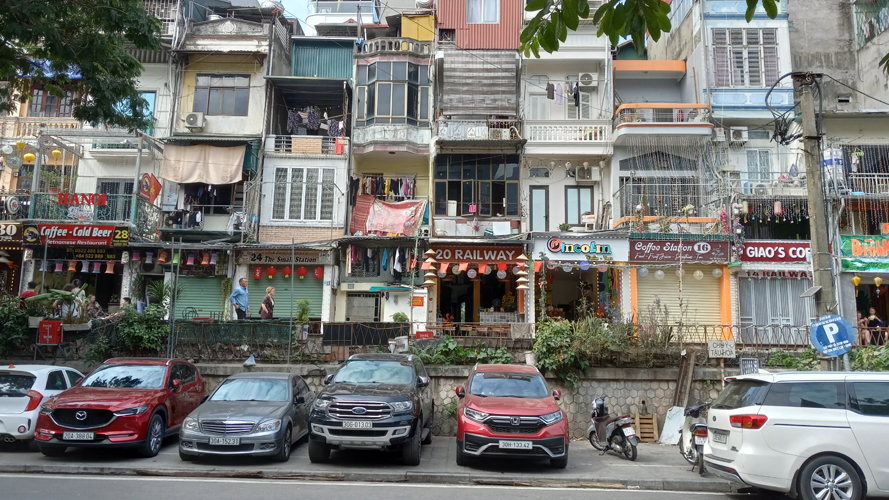Hanoi is only just discovering the beaten track. It is far from tourism-oriented,
compared to say, Thailand, where it is the acknowledged primary industry. It's all but
impossible to find a t-shirt that says Hanoi, for example.
Hanoi is also way behind on things like a comprehensive rail transit system. Instead,
the streets are filled with motorbikes, which, judging from the poor wages and nearly
valueless currency, the dong, are the biggest and most-prized possession for the up and
coming. At the time we visited, ATMs delivered two million dong for 80USD. A tip of
100,000 dong was cause for photo-taking and reporting it to management.
The center of life and acitvity is Old Town, which is very much the center of
shopping and activity for the locals, with tourists mostly an afterthought. Whole blocks
are defined by the storefronts - the hardware block, the textile block, the sewing block,
the home decor block, the cheap Chinese decorations block, and lots of little grocery
and convenience stores.
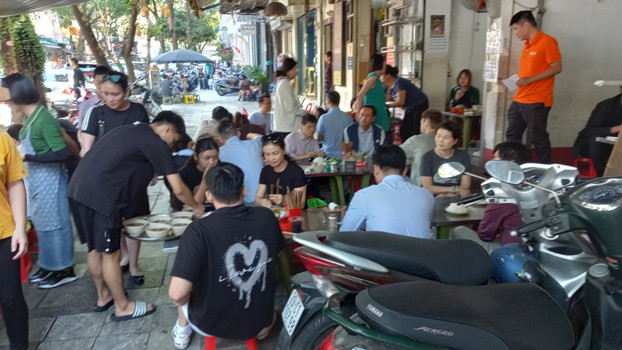 |
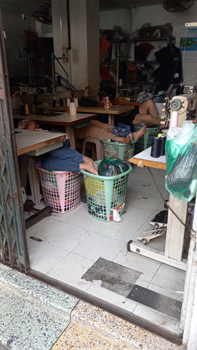 |
|
Lunch outside restaurant |
Sleeping through lunch break in sweatshop |
We stumbled upon Maison 1929, an excellent restaurant in a loud, clubby area of Old Town.
We sat on the upstairs balcony of the converted private home, watching the incredible
chaotic traffic play out. The streets of Old Town suffer no stop signs (or police presence),
and only the major arteries are shackled by traffic lights. This means every intersection,
almost none of which are 90°, display a constant drama of everyone going their own way all
the time. It is astonishing there aren't constant calls for ambulances, as no one will
yield to anyone else. For pedestrians, good luck, because there are essentially no sidewalks,
as every square meter is taken up by parked motorbikes, and most of the sidewalks are less
than a meter wide at best anyway.
At Maison 1929, the baked seabass in passion fruit sauce was outstanding. Our waiter was
so helpful, he not only called for a taxi, but came downstairs and outside to put us in it.
Another time, we flagged down a taxi ourselves, and he pulled over, came to get us, found
out where we wanted to go, and called another cab for us (and waited with us until he showed
up), because he was on his way to another call. The Vietnamese are delightfully helpful people.
We never managed to find a metered cab, and every trip to or from Old Town came to a different
amount. Some drivers flat out refused a tip.
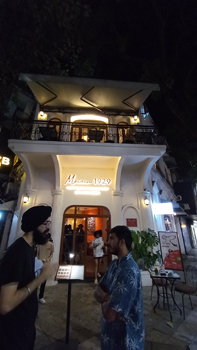 |
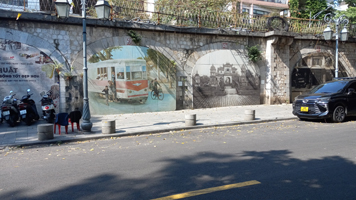 |
|
Maison 1929 |
Oldfashioned murals |
There is a train street, where tracks down the middle are barely adequate for the train
to fit between the buildings. Nearly every storefront is an outdoor cafe, lined with the
low stools everyone sits on in Vietnam. Again, no real sidewalk space, so pedestrians have
to walk between the tracks.
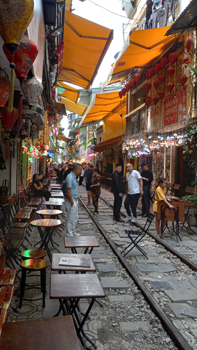 |
 |
|
Train Street coffeehouses |
Typical coffeehouse, Old Town |
Vietnamese food is world-famous for its subtlety compared to say, Chinese, and we were
never disappointed. We expected a greater police presence, but they were essentially
invisible outside the airport, where immigration officers harassed all kinds of people
just trying leaver again, causing many to miss our flight out, for example. I gave my
remaining dong to a cleaning lady, who was ever so grateful, and after waiting an extra
ten minutes for our passengers to break out of immigration, our flight took off, without
anyone in the first five rows.
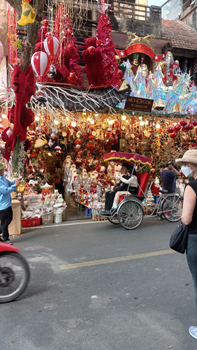 |
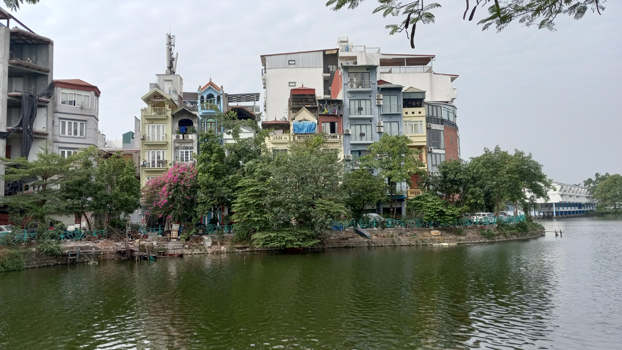 |
|
Chinese Decor Store |
Nicer architectural mix, Lake Ho Tay, Hanoi |
Hanoi is not a major metropolis. It doesn't seem to have discovered zoning yet, and
buildings are a delightful jumble of styles, uses and ages. There are the occasional
building towers here and there, but no concentrated downtown office area. Setbacks,
facing the street and other quaint western notions are largely ignored. Our stay of
three days and two nights was plenty for a memorable trip, made possible by being so
close to Bangkok, where we were based.

